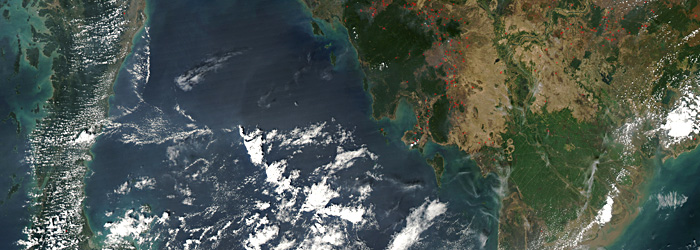Current Project
Hydro-Meteorological Disaster Risk Reduction & Climate Change
Lessons Learned for Resilient Adaptation to a Changing Climate
− Supported by USAID-Office of Foreign Disaster Assistance (OFDA)
Executive summary: Working with a changing climate, not against it.
USAID POLICY AND PROGRAM GUIDANCE: Building Resilience to Recurrent Crisis
This report from the USAID US Agency for International Development, December 2012, is a very interesting and important document. In theory, it provides a view to changes in the way USAID will undertake emergency humanitarian assistance and long-term development in the next 4 years or so. It highlights the need for finding a way to meaningfully bridge these two mandates of USAID so they do not end up pursuing sustainable development and climate change-related adaptation at cross purposes. The new organizational focus is on building resilience.
The report is as interesting for what it does not say as for what it does say. The document highlights resilience while other words such as adaptation, climate change, and sustainable development are hardly used, though they dominated discussion in earlier decades. It seems that Climate Change Adaptation (CCA) has been more or less overshadowed by long-term development. The document can be found in PDF format at the archived USAID website.
Comments on the document are appreciated, and can be left here.
Overview
GOAL: We seek to bridge HM disaster risk reduction strategies, tactics and activities in order to cope with a changing climate in the face of an uncertain future.
Objectives
- To identify strengths, weaknesses, opportunities and constraints in DRR activities in order to strategize about DRR program development in the face of uncertain hydro-meteorological future.
- To provide recommendations to the DRR community along with statements about the potential impacts of not implementing those recommendations.
- To use lessons identified from implementing disaster risk reduction programs to inform and enhance climate-related decision making processes at various levels of society.
- To share lessons-related knowledge and experience for resilient adaptation activities for climate change at community, national, regional and river basin levels.
Activities
- Review grant documents, fact sheets and annual other relevant reports.
- Survey OFDA hydro-meteorological DRR activities, worldwide.
- Identify and review similar HM DRR programs implemented by other organizations, where possible.
- Interview partners, users, local governments or communities as appropriate.
- Compare and contrast HM DRR lessons identified from the various programs surveyed in different regions (Asia, sub-Saharan Africa, Latin America).
- Prepare a report of survey findings to be disseminated in print and via a project website and the use of various social networks (e.g., Facebook, podcasts, editorials, blogs.
- Share findings via conferences, meetings and internet, as funds permit.
Proposed Geographic Coverage
Sub-Saharan Africa
− EAST AFRICA: ICPAC Climate Prediction and Applications Center (Greater Horn of Africa)
ASIA
-South Asia: ICIMOD flood and flash flood early warning (Highlands to Ocean Nepal and Bangladesh)
− SOUTHEAST ASIA:Flooding in the lower Mekong Basin.
Central America & Caribbean
− Central Americanflash Flood Guidance system (CAFFG) Caribbean: Natural Hazard Impact Assessment – Environmental Impact Assessment (NHIA-EIA)
RANET
-Radio and Internet fot the communication of hydro-meteorological and climate-related information..
